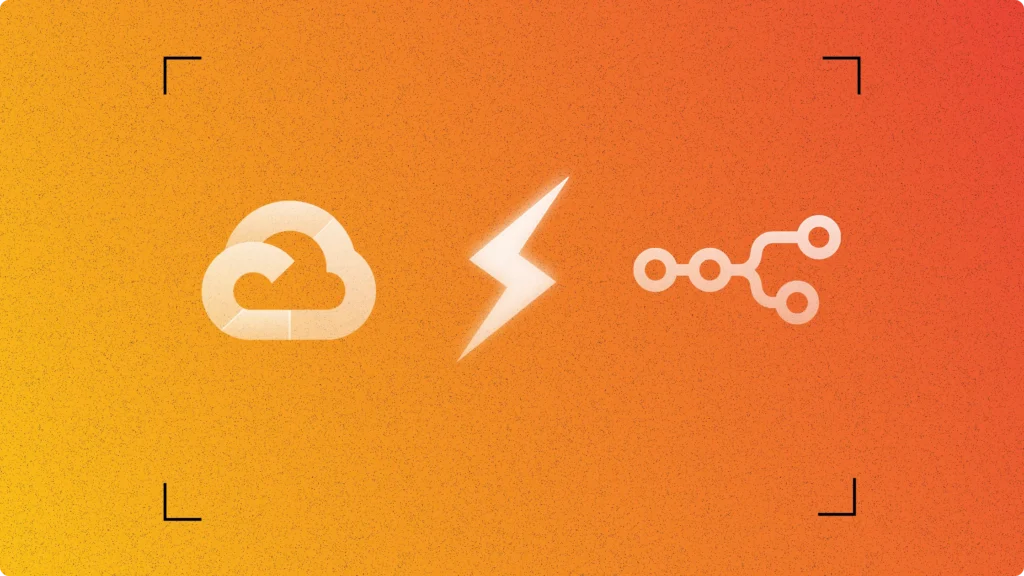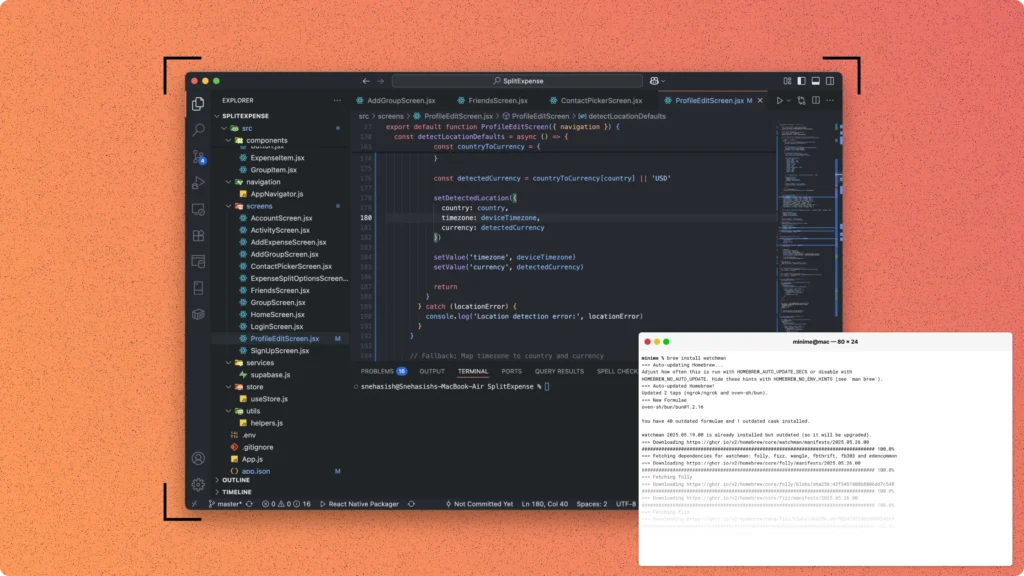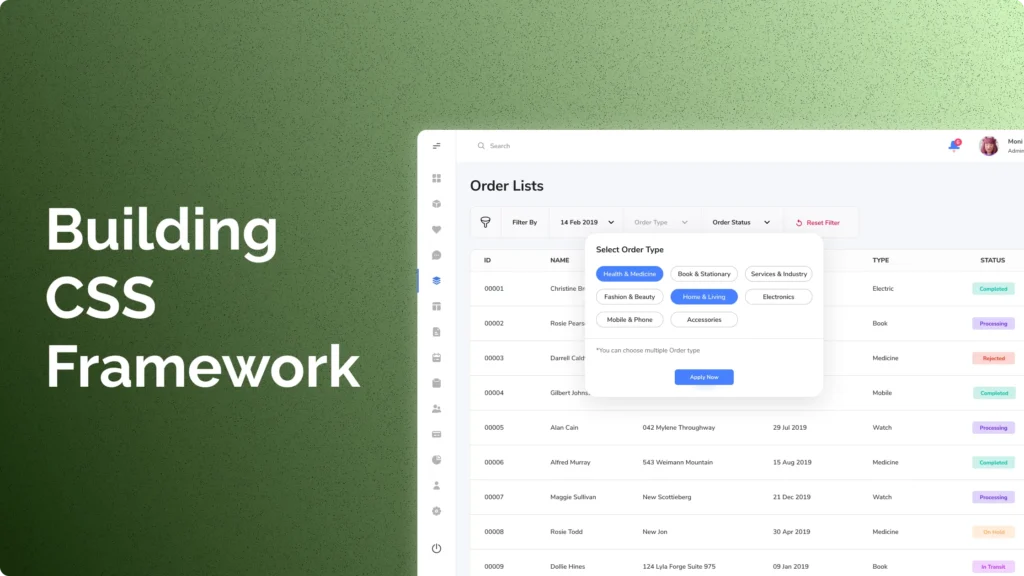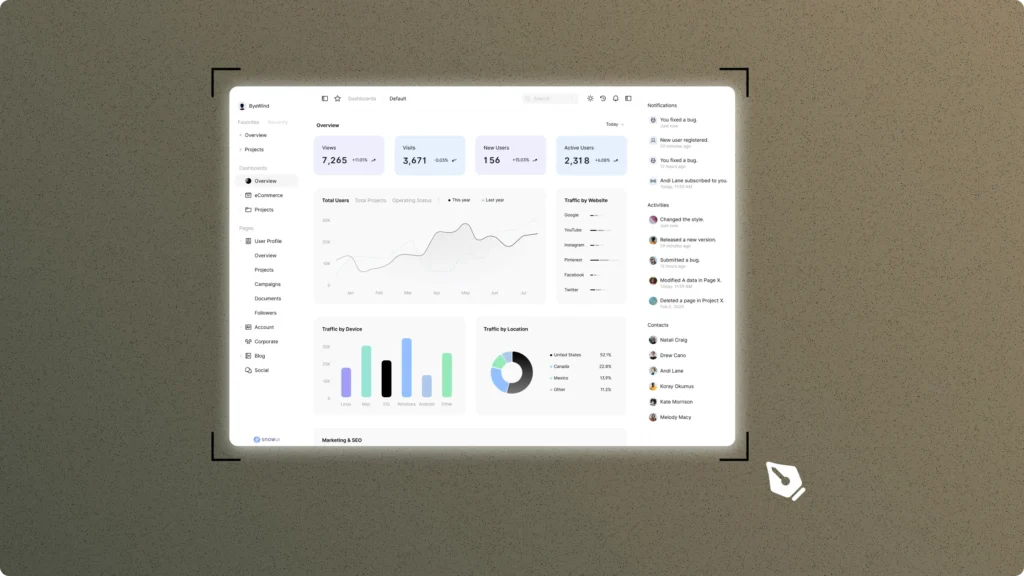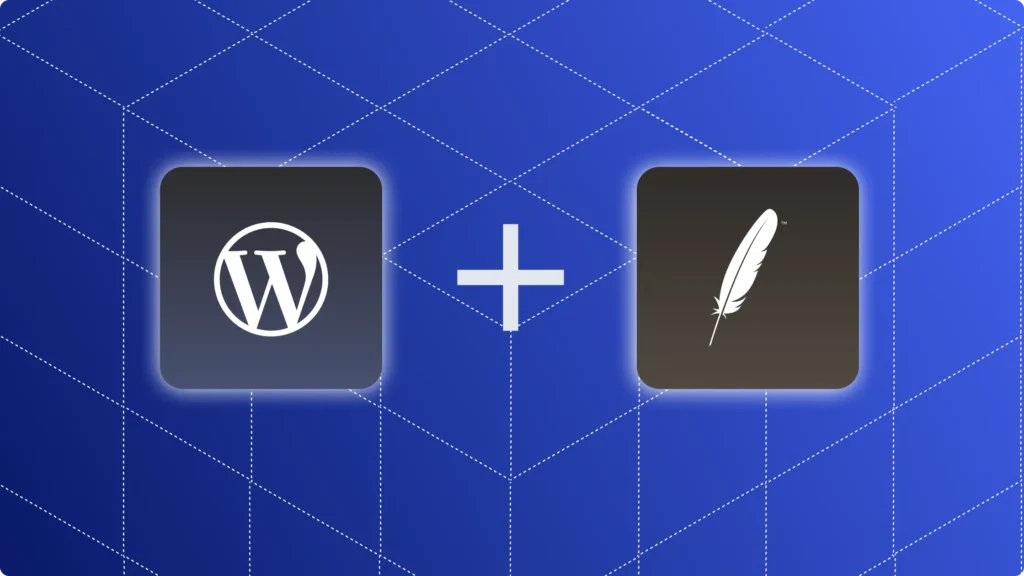Autonomous AI agents represent the next frontier in software engineering, evolving from simple chatbots to sophisticated systems that can reason, plan, and execute complex tasks independently. This comprehensive technical guide explores the fundamental concepts, implementation patterns, and production-ready architectures that power modern AI agents in 2025.
The emergence of Large Language Models (LLMs) has fundamentally transformed agent development, enabling natural language reasoning and tool usage at unprecedented scales. 51% of organizations now run AI agents in production, with mid-sized companies leading adoption at 63%. Understanding agent mechanics has become essential for developers building the next generation of intelligent systems.
Foundational concepts and architectural frameworks
The PEAS framework for agent design
Russell & Norvig’s PEAS framework, refined in their 2021 fourth edition, remains the gold standard for systematic agent specification. This framework decomposes agent-environment interactions into four critical dimensions that guide architectural decisions.
Performance measures define quantitative success criteria that drive decision-making processes. Modern implementations require careful design to align with desired outcomes while avoiding reward hacking. Autonomous vehicles optimize across safety metrics (collision avoidance rates), efficiency measures (travel time optimization), and comfort parameters (smooth acceleration profiles). Production systems typically implement multi-objective optimization with weighted performance functions.
Environment characteristics fundamentally shape agent architecture choices. Contemporary systems operate across multiple environment dimensions: observability (partial vs. full sensor coverage), determinism (predictable vs. stochastic outcomes), and dynamics (static vs. changing conditions). Multi-agent environments introduce coordination challenges requiring consensus algorithms and communication protocols.
Actuators enable environmental interaction through diverse mechanisms. Physical robots deploy manipulators and locomotion systems, while software agents execute through API calls, database transactions, and service invocations. Modern agent frameworks abstract actuator interfaces, enabling tool-agnostic implementations.
Sensors provide environmental perception through multimodal inputs. Production systems integrate computer vision (cameras, LiDAR), audio processing (microphones), haptic feedback (force sensors), and digital interfaces (API responses, sensor data). Sensor fusion architectures combine multiple modalities for robust perception.
Agent classification and architectural patterns
Reactive architectures implement direct stimulus-response mappings optimized for real-time performance. These systems excel in time-critical applications requiring immediate responses without internal state maintenance. Rule-based implementations using finite state machines achieve computational efficiency but sacrifice adaptability to novel situations.
class ReactiveAgent:
def __init__(self, rules):
self.perception_action_rules = rules
self.state = None # No internal state
def act(self, percept):
# Direct mapping from perception to action
return self.perception_action_rules[percept.type]
Deliberative architectures maintain symbolic world representations and employ planning algorithms for goal-directed behavior. These systems implement sensing-modeling-planning-acting cycles with internal belief states and forward search capabilities. Modern implementations leverage hierarchical planning with STRIPS-style operators and goal decomposition.
class DeliberativeAgent:
def __init__(self):
self.world_model = WorldModel()
self.planner = HierarchicalPlanner()
self.goals = GoalStack()
async def deliberate_and_act(self, percept):
# Update world model
self.world_model.update(percept)
# Plan action sequence
plan = await self.planner.plan(
self.world_model.current_state,
self.goals.current_goal()
)
# Execute first action
return plan.next_action()
Belief-Desire-Intention (BDI) architectures provide sophisticated rational agent behaviour based on Michael Bratman’s practical reasoning theory. This framework separates beliefs (knowledge about the world), desires (motivational states), and intentions (committed action plans). Modern BDI implementations use temporal logic representations and support dynamic belief revision.
The BDI execution cycle continuously evaluates belief updates, reconsiders intentions, and selects actions based on current commitments. Production BDI systems like JACK and AgentSpeak demonstrate real-world applicability in enterprise environments.
class BDIAgent:
def __init__(self):
self.beliefs = BeliefBase()
self.desires = DesireSet()
self.intentions = IntentionStack()
self.plans = PlanLibrary()
async def bdi_cycle(self, percept):
# Update beliefs
self.beliefs.revise(percept)
# Update desires based on new beliefs
self.desires.update(self.beliefs)
# Reconsider intentions
if self.should_reconsider():
new_intentions = self.deliberate(
self.beliefs, self.desires
)
self.intentions.update(new_intentions)
# Execute committed plan
return await self.execute_intention()
Hybrid architectures combine reactive and deliberative capabilities, addressing limitations of pure paradigms. The three-layer architecture separates reactive responses, deliberative planning, and executive coordination. Modern implementations like Microsoft’s Semantic Kernel and LangGraph demonstrate hybrid approaches integrating LLMs with traditional planning algorithms.
Recent developments in agent theory (2020-2025)
The emergence of LLM-based agents has revolutionised agent architectures, enabling natural language-driven reasoning and planning. The ReAct paradigm, introduced by Yao et al. (2022), established interleaved reasoning and action sequences that have become foundational to modern agent frameworks.
Agentic AI systems now demonstrate human-like reasoning capabilities through chain-of-thought processes, tool usage, and memory persistence. Tool-augmented LLMs like Toolformer show how agents can learn API usage through self-supervised methods, while WebGPT pioneered web browsing integration with human feedback training.
Multi-agent coordination has evolved with frameworks like AutoGen and CrewAI enabling sophisticated collaborative behaviors. Generative agents demonstrate emergent social behaviors in simulated environments, with 25 agents autonomously organizing parties and forming relationships through memory synthesis and dynamic retrieval.
Current AI agent frameworks and implementation tools
LangChain and LangGraph ecosystem
LangChain has emerged as the dominant agent framework with 70 million monthly downloads exceeding even OpenAI’s SDK. LangGraph, the stateful orchestration layer, shows 43% adoption among LangSmith organizations and represents the evolution toward production-ready agent systems.
LangGraph’s graph-based architecture enables complex multi-agent workflows with persistent state management. The framework supports sequential, parallel, and hierarchical agent coordination patterns with built-in human-in-the-loop capabilities.
from langgraph import StateGraph, START, END, MessagesState
from langgraph.checkpoint.memory import MemorySaver
def create_research_agent():
def agent_node(state: MessagesState):
# Agent reasoning and tool calling
response = llm_with_tools.invoke(state["messages"])
return {"messages": [response]}
def should_continue(state: MessagesState):
# Conditional logic for tool usage
last_message = state["messages"][-1]
if hasattr(last_message, 'tool_calls'):
return "tools"
return END
# Build execution graph
workflow = StateGraph(MessagesState)
workflow.add_node("agent", agent_node)
workflow.add_node("tools", ToolNode(tools))
workflow.add_conditional_edges("agent", should_continue)
workflow.add_edge("tools", "agent")
workflow.add_edge(START, "agent")
return workflow.compile(
checkpointer=MemorySaver(),
interrupt_before=["tools"] # Human approval
)
Performance characteristics show significant adoption growth, with 21.9% of traces involving tool calls (up from 0.5% in 2023). The platform demonstrates enterprise scalability with Fortune 500 deployments and comprehensive observability through LangSmith integration.
Strengths include mature ecosystem integration, flexible graph-based architecture, and strong developer tools. Limitations involve complex setup for simple use cases, heavy dependency chains, and performance overhead in complex workflows.
CrewAI performance leadership
CrewAI has emerged as a high-performance alternative demonstrating 5.76x faster execution than LangGraph in certain benchmarks. Built from scratch without LangChain dependencies, CrewAI implements role-based agent coordination with specialized capabilities.
from crewai import Agent, Task, Crew, Process
# Define specialized agents
researcher = Agent(
role='Senior Researcher',
goal='Conduct thorough research on {topic}',
backstory='Expert at finding and analyzing information',
tools=[SerperDevTool(), WebScrapingTool()],
verbose=True
)
writer = Agent(
role='Tech Writer',
goal='Create compelling content based on research',
backstory='Skilled at transforming complex data into clear narratives',
allow_delegation=False
)
# Define collaborative tasks
research_task = Task(
description='Research latest developments in {topic}',
agent=researcher,
expected_output='Comprehensive research report'
)
writing_task = Task(
description='Write technical article based on research',
agent=writer,
expected_output='Well-structured technical article',
context=[research_task] # Dependency
)
# Create and execute crew
crew = Crew(
agents=[researcher, writer],
tasks=[research_task, writing_task],
process=Process.sequential,
memory=True,
verbose=True
)
result = crew.kickoff(inputs={'topic': 'AI Agents 2025'})
CrewAI’s dual architecture combines Crews for autonomous agent collaboration with Flows for precise workflow control. This enables both emergent behaviours and deterministic execution patterns.
Enterprise features include unified control planes, real-time monitoring, enterprise-grade security, and 24/7 support. The framework demonstrates linear scalability with growing agent teams and cost efficiency through optimised execution patterns.
Microsoft Semantic Kernel enterprise integration
Microsoft Semantic Kernel provides production-ready enterprise features with multi-language support (C#, Python, Java) and comprehensive Azure integration. The framework emphasises security, compliance, and scalability for enterprise deployments.
// Enterprise-grade agent configuration
var builder = Kernel.CreateBuilder();
builder.AddAzureOpenAIChatCompletion(
deploymentName: "gpt-4",
endpoint: azureEndpoint,
apiKey: azureApiKey
);
// Add enterprise security
builder.Services.AddSingleton<IAuthenticationHandler>(
new EnterpriseAuthHandler()
);
var kernel = builder.Build();
// Multi-agent orchestration
var agents = new AgentGroupChat(
new ChatCompletionAgent()
{
Instructions = "You are a financial analyst",
Kernel = kernel,
Name = "FinancialAgent"
},
new ChatCompletionAgent()
{
Instructions = "You are a technical writer",
Kernel = kernel,
Name = "WriterAgent"
}
);
await foreach (var message in agents.InvokeAsync(userInput))
{
Console.WriteLine($"{message.AuthorName}: {message.Content}");
}
Key enterprise capabilities include role-based access controls, comprehensive audit logging, SOC2/GDPR compliance, and 99.9% uptime SLA. The framework integrates seamlessly with Microsoft’s enterprise ecosystem including Azure AI Search, Power Platform, and Microsoft 365.
OpenAI Assistants API and alternatives
OpenAI’s Assistants API remains in beta but shows wide enterprise adoption through native AutoGen integration. The API provides built-in capabilities for file search, code interpretation, and function calling with persistent conversation threads.
import openai
# Create specialized assistant
assistant = openai.beta.assistants.create(
name="Data Analysis Assistant",
instructions="""You are a senior data analyst. Use code interpreter
to analyze datasets and create visualizations.""",
model="gpt-4-turbo",
tools=[
{"type": "code_interpreter"},
{"type": "file_search"},
{"type": "function", "function": {
"name": "query_database",
"description": "Query production database",
"parameters": {
"type": "object",
"properties": {
"query": {"type": "string"},
"limit": {"type": "integer"}
}
}
}}
]
)
# Execute with persistent context
thread = openai.beta.threads.create()
message = openai.beta.threads.messages.create(
thread_id=thread.id,
role="user",
content="Analyze Q4 sales performance",
attachments=[{
"file_id": uploaded_file.id,
"tools": [{"type": "code_interpreter"}]
}]
)
run = openai.beta.threads.runs.create(
thread_id=thread.id,
assistant_id=assistant.id
)
Limitations include beta API stability concerns, vendor lock-in, limited customization, and escalating token costs. The V1 to V2 migration requirement by July 2025 presents deployment challenges for production systems.
Comparative framework analysis
Performance benchmarks show significant variation across frameworks:
| Framework | Speed | Enterprise Ready | Learning Curve | Community |
|---|---|---|---|---|
| CrewAI | 5.76x faster | High | Medium | Growing |
| LangGraph | Baseline | High | Steep | Large |
| Semantic Kernel | Optimized | Very High | Medium | Medium |
| Assistants API | Variable | Medium | Low | Very Large |
Architecture patterns differ significantly: CrewAI emphasizes role-based collaboration, LangGraph implements graph-based workflows, Semantic Kernel provides event-driven coordination, and AutoGen enables conversation-based interaction.
Cost analysis varies by deployment model: open-source frameworks incur LLM API costs plus infrastructure, while enterprise solutions add platform fees. CrewAI Enterprise and Semantic Kernel provide predictable pricing models for budget planning.
Technical implementation
Advanced perception modules
Modern agent perception systems integrate multimodal processing capabilities handling text, vision, audio, and sensor data streams. Production implementations require sophisticated feature extraction pipelines optimized for real-time performance.
class AdvancedPerceptionModule:
def __init__(self):
self.text_processor = OpenAIEmbeddings(
model="text-embedding-3-large"
)
self.vision_processor = VisionTransformer(
model="google/vit-large-patch16-224"
)
self.audio_processor = WhisperProcessor()
self.fusion_layer = MultimodalFusion(hidden_dim=1024)
# Performance optimizations
self.batch_processor = BatchProcessor(batch_size=32)
self.embedding_cache = LRUCache(maxsize=10000)
async def process_multimodal_input(self, inputs):
embeddings = []
# Parallel processing of different modalities
tasks = []
for modality, data in inputs.items():
if modality == "text":
task = self.process_text_async(data)
elif modality == "image":
task = self.process_image_async(data)
elif modality == "audio":
task = self.process_audio_async(data)
tasks.append(task)
# Wait for all processing to complete
embeddings = await asyncio.gather(*tasks)
# Fusion and final representation
return self.fusion_layer.combine(embeddings)
async def process_text_async(self, text):
# Check cache first
cache_key = hash(text)
if cache_key in self.embedding_cache:
return self.embedding_cache[cache_key]
# Batch processing for efficiency
embedding = await self.text_processor.aembed_query(text)
self.embedding_cache[cache_key] = embedding
return embedding
Performance optimizations include batching (10-100 inputs for 3x throughput), INT8 quantization (2x speed with <1% accuracy loss), LRU caching (95% hit rates), and streaming processing with windowing for real-time applications.
Knowledge representation and retrieval systems
Vector database implementations form the backbone of modern agent memory systems. Production deployments require careful selection between managed services and self-hosted solutions based on scale and latency requirements.
Pinecone provides managed cloud service with 50,000 QPS capability and P95 latency under 100ms. Auto-scaling Kubernetes clusters handle traffic spikes, while proprietary algorithms combined with FAISS deliver exact KNN search. Pricing at $70/million queries makes it suitable for high-volume enterprise applications.
Weaviate offers flexible open-source deployment with 10,000-15,000 QPS using optimized HNSW algorithms. GraphQL APIs and built-in vectorization modules simplify integration, while optional cloud hosting provides managed operation without vendor lock-in.
ChromaDB excels in development environments with lightweight SQLite-based architecture achieving 5,000-8,000 QPS. Single binary deployment and Docker containers enable rapid prototyping and smaller-scale production deployments.
class ProductionRAGSystem:
def __init__(self):
self.vector_store = PineconeVectorStore(
index_name="production-knowledge",
environment="us-east1-gcp",
namespace="enterprise"
)
self.keyword_store = ElasticsearchBM25(
index_name="keyword-search"
)
self.reranker = CrossEncoderReranker(
model="ms-marco-MiniLM-L-12-v2"
)
self.cache = QueryCache(redis_client, ttl=3600)
async def hybrid_retrieval(self, query: str, k: int = 20):
# Check cache first
cached_result = await self.cache.get(query)
if cached_result:
return cached_result
# Parallel semantic and keyword search
semantic_task = self.vector_store.asimilarity_search(
query, k=k//2, include_metadata=True
)
keyword_task = self.keyword_store.keyword_search(
query, k=k//2, boost_factors={"title": 2.0}
)
semantic_docs, keyword_docs = await asyncio.gather(
semantic_task, keyword_task
)
# Deduplicate and rerank
all_docs = self.deduplicate_results(
semantic_docs + keyword_docs
)
reranked = await self.reranker.rerank(query, all_docs)
# Cache results
await self.cache.set(query, reranked[:k])
return reranked[:k]
Advanced knowledge graphs using frameworks like Graphiti provide bi-temporal data modeling tracking both event time and ingestion time. Real-time updates enable incremental learning without batch recomputation, while hybrid retrieval combines semantic embeddings, BM25 search, and graph traversal for comprehensive information access.
Sophisticated reasoning engines
Monte Carlo Tree Search (MCTS) implementations with reflection capabilities demonstrate significant improvements over baseline agents. Research shows 6-30% improvement on complex tasks like VisualWebArena when combining GPT-4 with Reflective-MCTS algorithms.
class ReflectiveMCTS:
def __init__(self, exploration_constant=1.4):
self.c = exploration_constant
self.tree = {}
self.reflection_history = []
self.value_network = ValueNetwork()
def select_action_with_reflection(self, state):
if state not in self.tree:
return self.expand_with_prior(state)
# UCB1 with reflection bias
best_action = max(
self.tree[state]['actions'].items(),
key=lambda x: self.ucb1_with_reflection(state, x[1])
)
return best_action[0]
def ucb1_with_reflection(self, state, action_stats):
if action_stats['visits'] == 0:
return float('inf')
# Standard UCB1 components
exploitation = action_stats['value'] / action_stats['visits']
exploration = self.c * math.sqrt(
math.log(self.total_visits) / action_stats['visits']
)
# Reflection bias from successful historical patterns
reflection_bonus = self.calculate_reflection_bonus(
state, action_stats
)
return exploitation + exploration + reflection_bonus
def calculate_reflection_bonus(self, state, action_stats):
# Analyze successful past trajectories
similar_states = self.find_similar_historical_states(state)
successful_actions = [
trajectory['actions'] for trajectory in self.reflection_history
if trajectory['reward'] > 0.7 and
any(self.state_similarity(s, state) > 0.8
for s in trajectory['states'])
]
if successful_actions:
action_frequency = self.calculate_action_frequency(
action_stats['action'], successful_actions
)
return 0.1 * action_frequency # Small bonus for historically successful actions
return 0.0
Planning algorithm performance shows 2.7x reduction in compute costs with Exploratory Learning techniques, though complex task success rates remain below 50%, highlighting ongoing research needs.
A search implementations* excel in deterministic environments with admissible heuristics. Production systems combine multiple search strategies: A* for optimal path finding, MCTS for stochastic environments, and neural planning for learned heuristics.
Action execution and tool integration
Production-ready tool executors require sophisticated error handling, circuit breakers, and fallback strategies to maintain reliability in dynamic environments.
class ProductionToolExecutor:
def __init__(self):
self.tools = {}
self.circuit_breakers = {}
self.rate_limiters = {}
self.metrics = ToolMetrics()
self.fallback_strategies = FallbackStrategies()
async def execute_tool_with_resilience(
self, tool_name: str, params: Dict[str, Any]
) -> ToolResult:
start_time = time.time()
try:
# Pre-execution checks
await self.rate_limiters[tool_name].acquire()
if not self.circuit_breakers[tool_name].is_available():
return await self.execute_fallback(tool_name, params)
# Execute with timeout and monitoring
result = await asyncio.wait_for(
self.tools[tool_name].execute(params),
timeout=30.0
)
# Record success metrics
execution_time = time.time() - start_time
self.metrics.record_success(tool_name, execution_time)
self.circuit_breakers[tool_name].record_success()
return ToolResult(
success=True,
data=result,
execution_time=execution_time,
metadata={"tool": tool_name, "retries": 0}
)
except Exception as e:
execution_time = time.time() - start_time
self.metrics.record_failure(tool_name, e, execution_time)
self.circuit_breakers[tool_name].record_failure()
# Exponential backoff retry
retry_result = await self.retry_with_exponential_backoff(
tool_name, params, e, max_retries=3
)
if retry_result:
return retry_result
# Execute fallback strategy
fallback_result = await self.fallback_strategies.execute(
tool_name, params, e
)
return fallback_result or ToolResult(
success=False,
data=None,
error=str(e),
execution_time=execution_time
)
Circuit breaker implementations prevent cascading failures by temporarily disabling failed tools. Rate limiting with token bucket algorithms ensures API compliance and cost control. Fallback strategies maintain agent functionality when primary tools fail.
Advanced memory architectures
Multi-level memory hierarchies combine working memory (current context), short-term memory (session-based), long-term memory (persistent), and episodic memory (interaction history) for comprehensive agent memory capabilities.
Mem0 implementation demonstrates 26% higher response accuracy compared to OpenAI’s memory, 91% lower P95 latency (sub-second retrieval), 90% token savings through efficient consolidation, and scales to millions of facts with constant-time retrieval.
class ProductionMemorySystem:
def __init__(self):
# Multi-level memory hierarchy
self.working_memory = ContextWindow(capacity=32_000)
self.short_term_memory = Redis(
host="memory-cache", ttl=3600
)
self.long_term_memory = Mem0Memory(
config={
"vector_store": {"provider": "pinecone"},
"llm": {"provider": "openai", "model": "gpt-4"},
"embedder": {"provider": "openai"}
}
)
self.episodic_memory = GraphMemoryStore(
neo4j_connection="bolt://graph-db:7687"
)
async def consolidate_and_store(self, interaction: Interaction):
# Extract key memories from interaction
memories = await self.extract_structured_memories(interaction)
for memory in memories:
# Check for similar existing memories
similar_memories = await self.long_term_memory.search(
memory.content, threshold=0.85, limit=5
)
if similar_memories:
# LLM-based memory consolidation
consolidated = await self.consolidate_memories(
memory, similar_memories
)
await self.long_term_memory.update(consolidated.id, consolidated)
else:
# Store as new memory
memory_id = await self.long_term_memory.add(memory.content)
# Create episodic relationships
await self.episodic_memory.create_temporal_links(
memory, interaction.context, interaction.timestamp
)
async def retrieve_contextual_information(
self, query: str, max_tokens: int = 4000
):
# Multi-source retrieval strategy
retrieval_tasks = [
self.working_memory.get_relevant(query),
self.long_term_memory.search(query, limit=10),
self.episodic_memory.traverse_temporal_graph(query, depth=3)
]
working_context, semantic_memories, episodic_memories = \
await asyncio.gather(*retrieval_tasks)
# Combine and rank by relevance
all_context = [working_context] + semantic_memories + episodic_memories
ranked_context = await self.rank_by_relevance_and_recency(
query, all_context
)
# Fit within token budget
return self.optimize_context_for_budget(ranked_context, max_tokens)
Memory consolidation algorithms use LLMs to merge related information, extract structured facts, create temporal relationships, and calculate confidence scores for stored memories.
Advanced implementation patterns and production deployment
Hierarchical agent coordination
Multi-level control systems implement structured command hierarchies enabling effective task delegation and resource coordination across large agent populations.
class HierarchicalAgentSystem:
def __init__(self):
self.control_hierarchy = {
'strategic': StrategicPlanningAgent(),
'tactical': [TacticalCoordinationAgent() for _ in range(5)],
'operational': [OperationalExecutionAgent() for _ in range(20)]
}
self.communication_bus = MessageBus()
self.resource_manager = ResourceManager()
async def execute_complex_objective(self, objective):
# Strategic level: High-level planning
strategy = await self.control_hierarchy['strategic'].plan(
objective, available_resources=self.resource_manager.get_status()
)
# Tactical level: Coordinate execution teams
tactical_assignments = await asyncio.gather(*[
agent.coordinate_team(strategy.get_assignment(i))
for i, agent in enumerate(self.control_hierarchy['tactical'])
])
# Operational level: Execute tasks with monitoring
execution_results = []
for assignment in tactical_assignments:
operational_agents = self.select_operational_agents(assignment)
results = await self.execute_with_monitoring(
operational_agents, assignment
)
execution_results.extend(results)
# Aggregate and validate results
return self.synthesize_results(execution_results, objective)
Dynamic control flow adapts coordination patterns based on task complexity and agent availability. Fault tolerance mechanisms ensure graceful degradation when individual agents fail. Load balancing distributes work evenly across available resources.
Performance optimization at scale
Cost optimization strategies become critical for production deployments with high agent populations and complex reasoning requirements.
class IntelligentCostOptimizer:
def __init__(self):
self.model_router = ModelRouter()
self.response_cache = ResponseCache(ttl=3600)
self.batch_processor = BatchProcessor(max_size=20)
self.complexity_analyzer = ComplexityAnalyzer()
async def optimize_llm_inference(self, prompt: str, context: Dict):
# Cache check
cache_key = self.generate_cache_key(prompt, context)
cached_response = await self.response_cache.get(cache_key)
if cached_response:
return cached_response
# Route based on complexity analysis
complexity = self.complexity_analyzer.analyze(prompt, context)
if complexity.score < 0.3: # Simple queries
model = "gpt-3.5-turbo" # $0.50/1M tokens
result = await self.batch_processor.add(prompt, model)
elif complexity.score < 0.7: # Medium complexity
model = "gpt-4o-mini" # $0.15/1M tokens
result = await self.model_router.call(model, prompt)
else: # Complex reasoning
model = "gpt-4o" # $5.00/1M tokens
result = await self.model_router.call(model, prompt)
# Cache successful responses
await self.response_cache.set(cache_key, result)
return result
Model quantization and pruning reduce computational requirements while maintaining performance. Knowledge distillation enables smaller models to replicate larger model capabilities. Dynamic resource allocation optimizes infrastructure costs based on demand patterns.
Security and safety considerations
Multi-layer security frameworks protect against diverse attack vectors including prompt injection, code execution vulnerabilities, and data exfiltration attempts.
class ComprehensiveSecurityFramework:
def __init__(self):
self.prompt_injection_detector = PromptInjectionDetector()
self.code_sandbox = SecureCodeSandbox()
self.output_sanitizer = OutputSanitizer()
self.audit_logger = AuditLogger()
self.rate_limiter = AdvancedRateLimiter()
async def secure_agent_execution(self, request: AgentRequest):
# Authentication and authorization
user = await self.authenticate_user(request.credentials)
if not await self.authorize_action(user, request.action):
raise UnauthorizedAccess()
# Rate limiting
if not await self.rate_limiter.allow_request(user.id):
raise RateLimitExceeded()
# Input validation and injection detection
if self.prompt_injection_detector.detect(request.prompt):
self.audit_logger.log_security_event(
user.id, "prompt_injection_attempt", request.prompt
)
return self.safe_response("Invalid input detected")
# Secure execution with sandboxing
sanitized_input = self.sanitize_input(request.prompt)
with self.code_sandbox.create_secure_context() as context:
context.set_limits(
memory_limit=100*1024*1024, # 100MB
cpu_time_limit=30, # 30 seconds
network_access=False,
file_system_access="read-only"
)
result = await context.execute_agent(sanitized_input)
# Output filtering and validation
filtered_result = self.output_sanitizer.sanitize(
result, user.clearance_level
)
# Comprehensive audit logging
self.audit_logger.log_agent_interaction(
user, request, filtered_result, execution_time
)
return filtered_result
Agent safety alignment requires constitutional AI approaches, reward modeling, and human oversight mechanisms. Robustness testing includes adversarial inputs, edge cases, and failure mode analysis.
Production monitoring and observability
Comprehensive monitoring systems provide real-time visibility into agent performance, cost metrics, and system health across distributed deployments.
class ProductionMonitoringSystem:
def __init__(self):
self.prometheus_client = PrometheusClient()
self.jaeger_tracer = JaegerTracer()
self.elasticsearch_logger = ElasticsearchLogger()
self.alert_manager = AlertManager()
async def monitor_agent_ecosystem(self, agents: List[Agent]):
monitoring_tasks = []
for agent in agents:
# Performance monitoring
monitoring_tasks.append(
self.monitor_agent_performance(agent)
)
# Cost tracking
monitoring_tasks.append(
self.track_agent_costs(agent)
)
# Health checks
monitoring_tasks.append(
self.health_check_agent(agent)
)
# Execute monitoring tasks concurrently
await asyncio.gather(*monitoring_tasks)
async def monitor_agent_performance(self, agent: Agent):
while agent.is_active():
# Collect performance metrics
metrics = {
'response_time': await self.measure_response_time(agent),
'throughput': await self.measure_throughput(agent),
'error_rate': await self.calculate_error_rate(agent),
'memory_usage': await self.get_memory_usage(agent),
'token_consumption': await self.get_token_usage(agent)
}
# Store metrics
self.prometheus_client.record_metrics(agent.id, metrics)
# Check thresholds and alert
if metrics['error_rate'] > ERROR_THRESHOLD:
await self.alert_manager.send_alert(
f"High error rate for agent {agent.id}: {metrics['error_rate']}"
)
await asyncio.sleep(MONITORING_INTERVAL)
Distributed tracing with OpenTelemetry enables end-to-end request tracking across multi-agent workflows. Custom metrics track business-specific KPIs like task completion rates and user satisfaction scores.
Real-world implementations and lessons learned
1. Enterprise deployment patterns
Production AI agent implementations demonstrate clear patterns for successful deployment across different organizational contexts and technical requirements.
Incremental deployment strategies prove most effective: starting with non-critical systems, expanding to core business applications, implementing proper governance frameworks, and scaling based on measurable success metrics. Organizations report 80% cost reduction in document processing and 90% faster customer support response times with proper implementation.
Tesla’s Autopilot system represents the largest-scale agent deployment with 400,000 vehicles running FSD software. The architecture demonstrates critical patterns: 14,000 GPUs for training infrastructure, custom D1 chips providing 22.6 teraflops performance, and 30 petabytes of video cache expanding to 200 petabytes. Fleet data creates a continuous learning flywheel, enabling iterative improvement through edge case discovery.
Netflix’s cloud-native AI infrastructure showcases enterprise-scale orchestration with Titus container management built on Apache Mesos, Maestro workflow orchestration handling hundreds of millions of compute jobs, and Metaflow ML development providing versioning and experiment tracking. The system processes petabytes of training data while serving real-time recommendations to hundreds of millions of users.
Code review and development agents
GitHub Copilot Workspace demonstrates production-ready agentic workflows with multi-step planning from issue to implementation. The system shows 40% time savings in code migration tasks and 55% increased developer productivity. Security mechanisms include branch restrictions, required human approval, and existing repository rulesets enforcement.
Implementation challenges include context understanding limitations in large codebases, occasional irrelevant suggestions, and the critical need for human oversight to prevent security vulnerabilities. Best practices combine AI suggestions with static analysis tools, implement proper security scanning workflows, and maintain human approval for security-sensitive code changes.
Autonomous trading systems
High-frequency trading implementations require microsecond-level decision making with sophisticated multi-component architectures. Performance specifications range from 20μs latency with standard network cards to sub-1μs with custom ASIC implementations.
Technical architecture includes Complex Event Processing engines for pattern recognition, Risk Management Systems with both strategy-level and global controls, and Market Data Adapters handling multiple exchange protocols. Lessons learned emphasize that latency optimization requires end-to-end system design, custom hardware becomes essential at competitive scales, and standard protocols significantly reduce integration complexity.
Multi-agent distributed systems
JADE framework deployments demonstrate scalable multi-agent coordination with FIPA-compliant middleware supporting thousands of agents per platform. Production implementations at Telecom Italia show Network Neutral Element Managers and Wizard Systems built on WADE workflows.
Coordination mechanisms include consensus algorithms for distributed state consistency, event-driven communication patterns, and load balancing across agent containers. Performance characteristics show linear scalability with additional containers and sub-second message delivery in LAN environments.
Industry best practices and recommendations
Framework selection guidance depends on specific requirements: CrewAI for performance-critical applications, Microsoft Semantic Kernel for enterprise environments, LangGraph for complex observable workflows, and hybrid approaches for sophisticated use cases.
Technical recommendations include starting with simple architectures and adding complexity gradually, implementing comprehensive monitoring from day one, establishing security practices early in development, building automated testing into deployment pipelines, and planning for gradual deployment with rollback capabilities.
Organizational success factors require executive sponsorship with clear strategy, cross-functional collaboration teams, robust testing and validation processes, continuous monitoring and improvement, and proper security and compliance frameworks.
Future directions
The AI agent landscape continues evolving rapidly with several key trends shaping development priorities. Standardization efforts focus on agent protocol standards enabling better interoperability between frameworks. Specialisation drives domain-specific agent frameworks optimized for particular use cases. Performance optimization continues improving execution speed and resource efficiency.
Model integration expands support for diverse LLM providers while multimodal capabilities enhance vision, audio, and document processing. Reasoning, improvement planning, and decision-making capabilities, while autonomous operation increases agent independence within safety constraints.
Market dynamics suggest framework consolidation through mergers and acquisitions, increased emphasis on production readiness, better resource management and pricing models, and enhanced governance for regulatory compliance.
Organizations developing AI agents should focus on understanding fundamental architectural patterns, selecting appropriate frameworks for specific requirements, implementing comprehensive monitoring and security practices, and planning for the evolving landscape of agent technologies. Success requires balancing technical excellence with operational reliability, security considerations, and measurable business outcomes.
The transformation from experimental prototypes to production-ready systems represents a fundamental shift in software development capabilities. AI agents are becoming essential tools for automation, decision-making, and human-AI collaboration across industries. Developers who master these core mechanics will be positioned to build the next generation of intelligent systems that enhance human capabilities and drive business value.
The future of AI agents lies not in replacing human intelligence but in augmenting it through sophisticated reasoning, planning, and execution capabilities. As these systems mature, they will become integral components of software architecture, enabling new possibilities for automation, analysis, and creative collaboration that were previously impossible to achieve.


